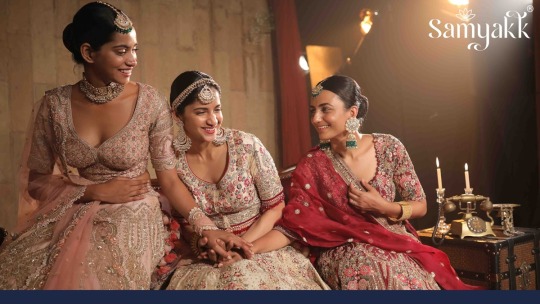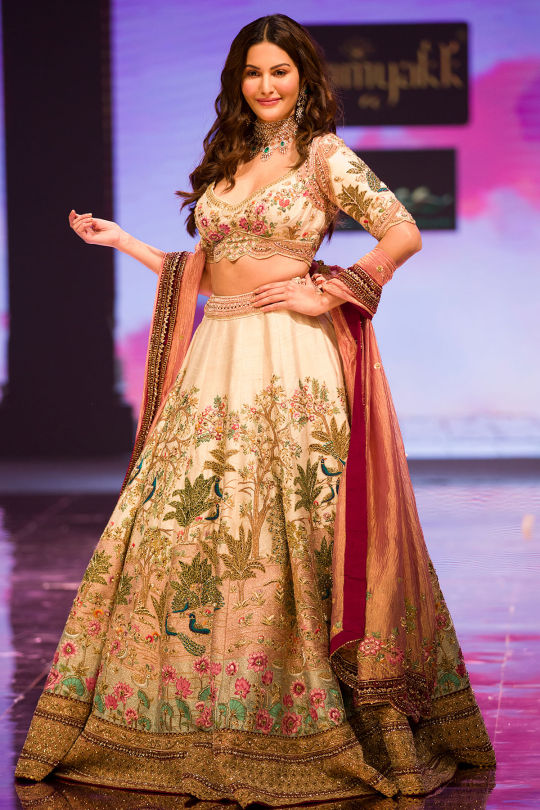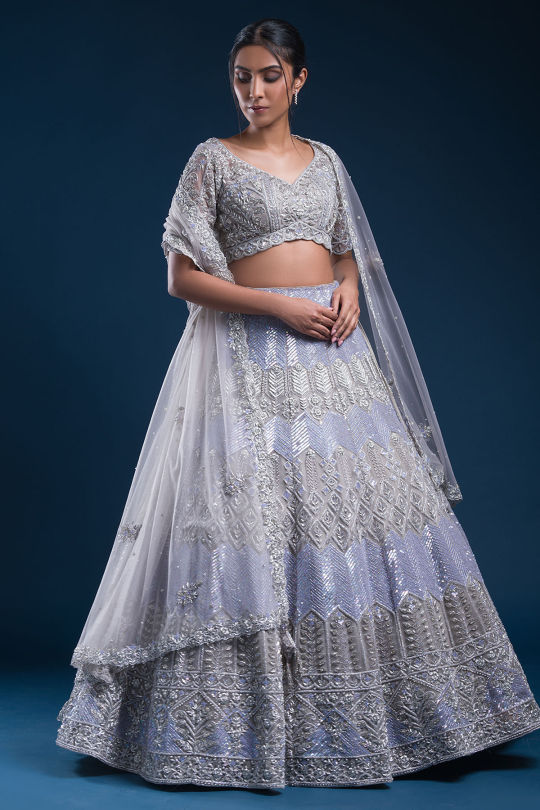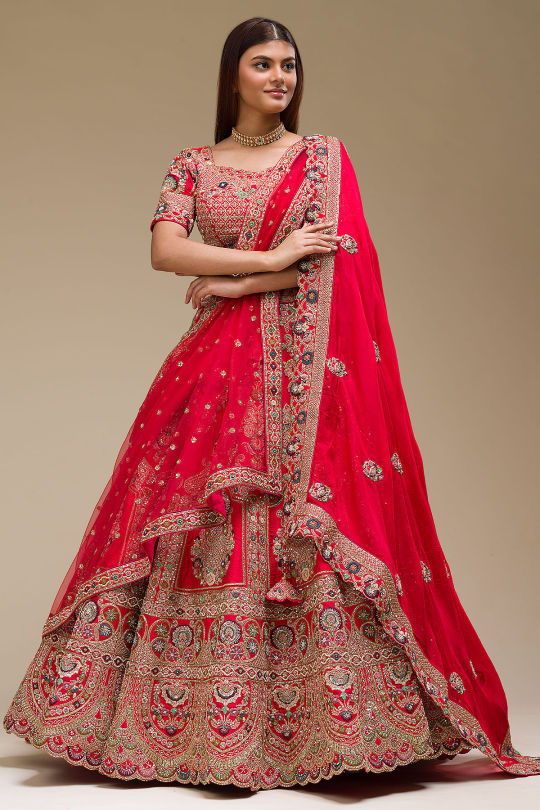#Tradition vs. innovation
Explore tagged Tumblr posts
Text
"The Clouds: A Timeless Satirical Masterpiece"

Aristophanes, through his timeless play "The Clouds," brings forth a riveting blend of humor, wit, and social commentary that transcends the boundaries of time and culture. William James Hickie's translation beautifully captures the essence of Aristophanes' original Greek comedy, allowing readers to revel in the satire and thought-provoking insights that remain relevant to this day.
"The Clouds" is a bold and imaginative critique of the intellectual and moral climate of ancient Athens, presented through the lens of the eccentric Socrates and the establishment of the "Thinkery." As readers embark on this comedic journey, they are treated to a sharp exploration of the conflict between tradition and innovation, philosophy and practicality.
The play unfolds with Strepsiades, a debt-ridden farmer seeking refuge from his financial woes, enrolling in the Thinkery to acquire the skill of persuasive argumentation. Here, Socrates, brilliantly portrayed as an airy intellectual consumed by abstract ideas, takes center stage. The ensuing dialogue between Strepsiades and Socrates is a testament to Aristophanes' genius in blending humor with intellectual depth.
Hickie's translation preserves the linguistic nuances and comedic elements, allowing readers to appreciate the clever wordplay, puns, and innuendos that make Aristophanes' work a literary treasure. The humor is sharp, and the satire biting, as Aristophanes fearlessly mocks the intellectual elite and challenges the societal norms of his time.
Beyond its comedic brilliance, "The Clouds" serves as a mirror reflecting the perennial tension between the pursuit of knowledge and the practicalities of daily life. Aristophanes raises thought-provoking questions about the responsibilities of intellectuals, the consequences of unchecked innovation, and the delicate balance between tradition and progress.
In the hands of Hickie, Aristophanes' wit shines through, making this translation an accessible and enjoyable experience for contemporary readers. The characters come to life with vividness, and the dialogues resonate with relevance, inviting readers to reflect on the timeless themes presented.
"The Clouds" is more than a mere comedy; it is a literary gem that challenges societal norms, questions authority, and invites introspection. Aristophanes' bold satire, combined with Hickie's adept translation, ensures that this play remains a captivating and enduring piece of literature that transcends the ages.
"The Clouds," of Aristophanes skillfully translated byWilliam James Hickie is available in Amazon in paperback 10.99$ and hardcover 18.99$ editions.
Number of pages: 105
Language: English
Rating: 8/10
Link of the book!
Review By: King's Cat
#Aristophanes#Greek comedy#Ancient Athens#Socrates#Thinkery#Satire#Humor#Intellectual elite#Social critique#Tradition vs. innovation#Practicality#Debt-ridden farmer#Persuasive argumentation#Wordplay#Puns#Innuendos#Hickie translation#Literary treasure#Intellectual responsibilities#Unchecked innovation#Balance#Progress#Authority#Societal norms#Thought-provoking#Comedy#Reflective#Timeless themes#Literature#Enduring satire
3 notes
·
View notes
Text
"The Clouds: A Timeless Satirical Masterpiece"

Aristophanes, through his timeless play "The Clouds," brings forth a riveting blend of humor, wit, and social commentary that transcends the boundaries of time and culture. William James Hickie's translation beautifully captures the essence of Aristophanes' original Greek comedy, allowing readers to revel in the satire and thought-provoking insights that remain relevant to this day.
"The Clouds" is a bold and imaginative critique of the intellectual and moral climate of ancient Athens, presented through the lens of the eccentric Socrates and the establishment of the "Thinkery." As readers embark on this comedic journey, they are treated to a sharp exploration of the conflict between tradition and innovation, philosophy and practicality.
The play unfolds with Strepsiades, a debt-ridden farmer seeking refuge from his financial woes, enrolling in the Thinkery to acquire the skill of persuasive argumentation. Here, Socrates, brilliantly portrayed as an airy intellectual consumed by abstract ideas, takes center stage. The ensuing dialogue between Strepsiades and Socrates is a testament to Aristophanes' genius in blending humor with intellectual depth.
Hickie's translation preserves the linguistic nuances and comedic elements, allowing readers to appreciate the clever wordplay, puns, and innuendos that make Aristophanes' work a literary treasure. The humor is sharp, and the satire biting, as Aristophanes fearlessly mocks the intellectual elite and challenges the societal norms of his time.
Beyond its comedic brilliance, "The Clouds" serves as a mirror reflecting the perennial tension between the pursuit of knowledge and the practicalities of daily life. Aristophanes raises thought-provoking questions about the responsibilities of intellectuals, the consequences of unchecked innovation, and the delicate balance between tradition and progress.
In the hands of Hickie, Aristophanes' wit shines through, making this translation an accessible and enjoyable experience for contemporary readers. The characters come to life with vividness, and the dialogues resonate with relevance, inviting readers to reflect on the timeless themes presented.
"The Clouds" is more than a mere comedy; it is a literary gem that challenges societal norms, questions authority, and invites introspection. Aristophanes' bold satire, combined with Hickie's adept translation, ensures that this play remains a captivating and enduring piece of literature that transcends the ages.
"The Clouds," of Aristophanes skillfully translated byWilliam James Hickie is available in Amazon in paperback 10.99$ and hardcover 18.99$ editions.
Number of pages: 105
Language: English
Rating: 8/10
Link of the book!
Review By: King's Cat
#Aristophanes#Greek comedy#Ancient Athens#Socrates#Thinkery#Satire#Humor#Intellectual elite#Social critique#Tradition vs. innovation#Practicality#Debt-ridden farmer#Persuasive argumentation#Wordplay#Puns#Innuendos#Hickie translation#Literary treasure#Intellectual responsibilities#Unchecked innovation#Balance#Progress#Authority#Societal norms#Thought-provoking#Comedy#Reflective#Timeless themes#Literature#Enduring satire
1 note
·
View note
Text
The Philosophy of Institutionalism
Institutionalism is a philosophical framework that explores the nature, origins, functions, and impacts of institutions on human life and society. Institutions, in this context, refer to structured systems or norms governing behavior, such as governments, legal systems, religions, markets, schools, and other social organizations. Institutionalism examines how institutions shape human behavior, reflect collective values, and influence cultural, economic, and ethical frameworks.
Key Aspects of the Philosophy of Institutionalism
Definition and Ontology of Institutions
Institutions are seen as enduring systems of rules, norms, and practices that structure social interaction.
Ontologically, they can be viewed as either constructivist (human-made constructs) or realist (having a degree of independent existence).
Institutional Functions
Social Order: Institutions provide stability and predictability in society.
Collective Action: They enable cooperation by coordinating group efforts and reducing uncertainty.
Value Transmission: Institutions preserve and transmit cultural, ethical, and historical values.
Institutional Evolution
Institutions are not static; they evolve over time due to changes in societal values, technology, or external pressures.
Institutionalism studies how traditions and innovations coexist and how outdated systems may persist despite inefficiencies.
Critiques and Challenges
Power Dynamics: Institutions can reinforce hierarchies, perpetuate inequality, and privilege certain groups over others.
Bureaucratic Alienation: Institutions can become rigid, focusing more on self-preservation than on serving their intended purposes.
Moral Questions: Are institutions inherently moral, or do they require continuous ethical scrutiny?
Institutions and Agency
Institutionalism explores the tension between individual agency and structural constraints.
It questions whether individuals shape institutions more, or vice versa, and how much freedom exists within institutional frameworks.
Economic and Political Institutionalism
Examines the role of institutions in shaping economic and political systems.
Includes theories like New Institutional Economics (which studies transaction costs and property rights) and Political Institutionalism (which analyzes governance structures).
Cultural and Religious Institutionalism
Investigates how religious and cultural institutions influence personal identity, ethics, and social norms.
Institutional Decay and Renewal
Institutions can become corrupt, inefficient, or irrelevant, leading to calls for reform, replacement, or dissolution.
Philosophical Questions in Institutionalism
What is the moral responsibility of institutions?
How do institutions mediate between the individual and society?
What is the role of tradition versus innovation in institutional development?
Can institutions transcend cultural or temporal contexts to become universal?
Relevance of Institutionalism Today
The philosophy of institutionalism is particularly relevant in modern debates on:
Reforming global governance and economic systems.
Addressing systemic inequalities in social and political institutions.
Balancing innovation and tradition in institutional frameworks.
Understanding the interplay between technology and institutional change.
Institutionalism ultimately seeks to understand and evaluate the mechanisms by which institutions shape, and are shaped by, the human condition.
#philosophy#epistemology#knowledge#learning#education#chatgpt#Philosophy of Institutionalism#Social Structures#Institutions and Society#Ontology of Institutions#Institutional Ethics#Power Dynamics#Cultural Institutions#Political Institutionalism#Economic Institutionalism#Social Order and Stability#Institutional Change#Individual Agency vs. Structure#Institutional Critique#Tradition and Innovation#Governance Systems
2 notes
·
View notes
Text

I do think the introduction of a trans-ethnic, phonetic writing system that could be used to transcribe (if, inevitably, inadequately) multiple unrelated languages of Asia is really cool and I do have to wonder about the linguistic and social consequences if this had stuck around after the Yuan dynasty
#logxx#I do think one of the few innovations the Roman empire produced and distributed was its writing system#When you compare the Roman language/writing system to others of its era it's pretty apparent why so many countries adopted it#Even when the vernacular was not closely related to Latin#vs. the extent of the Greek empire and how many regions adopted its writing system#Hanzi obviously has its advantages but kind of by its nature it was very inaccessible and hard to adapt to other languages#Despite the number of countries that tried#And frankly the transition from Traditional to Simplified script has been a bit disastrous for maintaining the legitimacy--#-- of Hanzi as a writing system :(
9 notes
·
View notes
Text
To the layman, however, the law often seems a highly technical, bewildering mystery, with its antiquated and sometimes impenetrable jargon, obsolete procedures, and interminable stream of Byzantine statutes, subordinate legislation, and judgments of the courts. Lawyers tend to look backwards. The doctrine of precedent, hallmark of the common law, dictates that what has gone before is what now should be, thereby affording a measure of certainty and predictability in a precarious world.
Raymond Wacks Law A Very Short Introduction
#what is law#the mystery of law#legal jargon#archaic language#byzantine bureaucracy#legal complexity#obsolete procedures#stream of statutes#court judgments#subordinate legislation#📚 Legal Theory & Precedent#doctrine of precedent#stare decisis#common law tradition#law looks backward#legal predictability#legal certainty#hallmark of common law#judicial precedent#living history of law#legal continuity#🧠 Critical & Philosophical#legal criticism#philosophy of law#legal skepticism#institutions and inertia#law as ritual#tradition vs innovation#ritual of precedent#law in theory
0 notes
Text
Balancing Tradition and Innovation: Lessons from a Changing Workplace
A Tale of Two Eras.Technology has reshaped nearly every aspect of modern work, but its impact hasn’t been uniform across industries. I’ve had the unique experience of working in roles that were transformed almost overnight by technology, while others remained relatively untouched. And then there’s photography—where the evolution has been profound, yet the essence of the craft feels…
#adapting to change#balancing tradition and innovation#dailyprompt#dailyprompt-1889#digital vs. analog#maintaining core skills#photography evolution#professional growth#remote work impact#technology in work
0 notes
Text
Is Meta's New AI Art Tool - Revolutionizing Creativity?
Have you ever wondered if artificial intelligence could create art?
This intriguing question leads us to explore Meta's new AI art generator, a tool that promises to revolutionize our understanding of creativity. As technology advances rapidly, this innovative platform is making waves in the digital art world, captivating both artists and tech enthusiasts alike.
The process of using Meta's AI art generator is user-friendly and accessible to everyone. By simply inputting preferences like color schemes and themes, We can witness how quickly it generates stunning artwork. While traditional methods have their charm, AI-generated creations offer fresh perspectives on artistry.
Join us as we delve into the potential impact of this groundbreaking tool!

#AIArt #MetaArtGenerator
Level up you art and your creativity with some of the leading Generative AI Platforms or with Meta AI.

#AI art generator#Meta AI#digital art#creativity tools#art technology#AI creativity#art revolution#digital content creation#artistic innovation#art automation#AI in art#art accessibility#creative process#art challenges#tech enthusiasts#user-friendly design#art styles#color schemes#art experimentation#digital artists#traditional vs AI art#future of creativity#art potential#AI-generated artwork#artistic possibilities#democratizing art#art tools#enhancing creativity#art and technology#AI art trends
0 notes
Text
Stitching Stories: Exploring Symbolism in American Lehenga Fashion

Embark on a vibrant exploration with "Cultural Chromatics," delving into the fusion of American fashion with diverse traditions. Uncover the symbolic language intricately woven into Lehengas, telling unique tales of heritage. This captivating journey unveils a colorful tapestry where traditional elegance seamlessly intertwines with modern trends. From intricate details to vibrant hues, each Lehenga for women narrates a story, creating a harmonious blend of cultures in the ever-evolving landscape of American fashion. "Cultural Chromatics" is a celebration of diversity, bridging the gap between tradition and contemporary style, inviting you to decode the rich narrative behind the beautiful Lehengas shaping the fashion landscape.
Selecting the ideal bridal lehenga is a crucial decision for any traditional Indian wedding, as it plays a pivotal role in enhancing the bride's beauty and elegance. With a myriad of styles and designs available, choosing the perfect lehenga can be overwhelming. Here are some guidelines to assist you in finding a bridal lehenga Choli that aligns with your style and accentuates your beauty.

A Guide to Choosing Your Perfect Bridal Lehenga
1. Consider Your Body Type:
- Take into account your body type when selecting a Designer bridal lehenga, as different styles flatter different figures.
- For a pear-shaped body, opt for a lehenga for wedding with a flared skirt and a fitted blouse, while an hourglass figure suits a lehenga Online with a fitted waist and flared skirt.
2. Choose the Right Fabric:
- The fabric of your bridal lehenga for women is as crucial as the style. Different fabrics offer unique qualities and textures.
- Options like silk, satin, velvet, and georgette each have distinct characteristics, so choose one that complements both your body type and skin tone.
3. Decide on the Length:
- Bridal lehengas come in various lengths, from knee-length to floor-length.
- Your choice depends on personal preference and the formality of the wedding. Traditional looks often feature floor-length lehengas, while knee-length Exclusive Bridal lehengas provide a more modern touch.
4. Pick the Right Colors:
- While red is a traditional and popular color, feel free to choose a hue that complements your skin tone and personal style.
- Popular Indian bridal lehenga colors include red, pastel, gold, and peach lehenga, but contemporary choices might include pastels or muted shades.
5. Consider the Embroidery and Embellishments:
- The embroidery and embellishments on your bridal lehenga online can significantly impact its overall appearance.
- Choose intricate and elegant embroidery styles, such as zari, gota, or sequins, to add a touch of glamour to your bridal ensemble.
6. Try On Different Lehengas:
- Experiment with various lehengas online to identify the one that best suits your body and style.
- Visiting bridal stores like Samyakk can be beneficial, as they offer a variety of bridal lehengas for brides and expert advice.
"Hey readers, let's unravel the viral allure of pastel lehengas, transforming brides into style sensations!"

Nowadays, celebrities prefer private day weddings with minimal settings. Mostly in day weddings, pastel bridal lehengas are becoming the most lovable preference for Bollywood bridal looks. Red has always been classic but nowadays we can witness pastels as the new red. Our pastel brides are choosing subtle colors for their bridal lehengas for wedding to attain a minimal and elegant look to soothe the whole vibe of the occasion.
Anushka Sharma is the OG bride who started the pastel bridal lehenga trend. Her wedding was one of the first celebrity weddings to go viral for all the right reasons. Her unique pastel pink lehenga by Sabyasachi was one of them. Her wedding lehenga clearly set the trend in 2017 for other brides by becoming a royal pastel bride, which is still appealing to us and ruling the top inspiration for many brides till date.
We've got to know that our B-town divas are going crazy to become pastel brides by ditching conventional red lehengas. It can be clearly seen how much they like to experiment with their wedding looks and set new trends. It can certainly inspire many of us and help to find the unique and best options for our big day.
Get ready to slay in the most lit Indian Bridal Attire, NYC style! Whether it's Indian Wedding Attire or the whole shebang of Indian Bridal Wedding Attire, we got you covered, fam. Cop the freshest Indian Bridal Wear in the USA straight from Samyakk – your plug for all things traditional and fire. Ready to stunt at weddings? Buy Indian Wedding Dresses Online in the USA and flex in that Traditional Indian Wedding Guest Dresses swag. Elevate your drip with our Traditional Indian Wedding Wear in the USA; you're about to be the talk of the town, guaranteed. Snag the best vibes with Traditional Indian Wedding Attire in the USA – because being extra is our tradition!
NowLet’s delve into Different Bridal Lehenga

The traditional lehenga choli ensemble comprises three elements: a lavishly adorned long skirt (lehenga), a snug-fitting blouse (choli), and a flowing dupatta (scarf). The intricately embellished skirt takes center stage, while the blouse, more subtly designed, complements the ensemble. Draped over the head and shoulders, the dupatta adds an element of grace and sophistication, completing the overall look.
Dive into the realm of bridal chic with a Crimson Red Silk Bridal Lehenga that radiates timeless elegance. This fiery ensemble is not just a garment; it's a statement, an ode to tradition with a contemporary twist. For those craving boldness, the Blackberry Raw Silk Bridal Lehenga steps in, embodying audacious style and unapologetic confidence. Its rich texture and deep hue make it a showstopper, perfect for the bride Dresses who dares to be different.
In the softer spectrum, the Light Lilac Purple Net Lehenga captures hearts with its ethereal charm. This dreamy creation blends delicacy with allure, creating a bridal Lehenga look that's both enchanting and modern. Meanwhile, the Cloud Cream Velvet Bridal Lehenga redefines opulence. Wrapped in creamy velvet Lehengas, it's a masterpiece that marries luxury and grace, ensuring the bride stands out as the epitome of sophistication.
Each Lehenga in Bride narrates a distinct tale – from the vibrant crimson to the regal blackberry, the soft lilac, and the cloud cream opulence. These choices allow brides to curate their narrative, expressing individual style on their momentous day. It's not just about wearing a lehenga blouse design; it's about donning an emblem of tradition, craftsmanship, and personal flair in the grand tapestry of a wedding day.
Frequently Asked Questions (FAQs)
1. What is the significance of the bridal lehenga color?
A: The color of the bridal lehenga often holds cultural and symbolic significance. Red is a traditional choice symbolizing love and prosperity, while modern brides also explore pastels and other vibrant hues to reflect personal style.
2. How is the length of a bridal lehenga determined?
A: Bridal lehenga length varies but is typically around 42 to 48 inches. It depends on personal preference, body type, and the desired look. Some brides opt for longer lengths for a more traditional appearance.
3. What are the common fabrics used in bridal lehengas?
A: Bridal lehengas are crafted from various fabrics like silk, velvet, georgette, and tulle. Each fabric lends a different texture and feel to the outfit, contributing to the overall look and comfort.
4. What is the role of zari work in bridal lehengas?
A: Zari work involves weaving threads of gold or silver into the fabric, adding intricate designs. In bridal lehengas, zari work enhances the richness and elevates the outfit's grandeur, making it perfect for weddings.
5. How do brides choose the right bridal lehenga pattern?
A: Brides select lehenga patterns based on personal style, body shape, and the wedding theme. Popular patterns include A-line, mermaid, and traditional flared styles. Some brides opt for heavily embellished patterns for a royal look, while others prefer minimalist designs for a modern touch.
CONCLUSION
The journey of selecting your dream bridal lehenga can be a delightful and exhilarating experience. By carefully considering factors such as body type, fabric, length, color, embroidery, and personal style, you can discover the perfect lehenga choli that not only enhances your beauty but also instills confidence on your special day. Explore the diverse and exquisite collection available on www.samyakk.com, offering a seamless shopping experience. For a more personalized touch and the opportunity to witness the opulence firsthand, we invite you to visit our store in Bangalore. Let Samyakk be your trusted companion in curating a bridal collection ensemble that embodies elegance and timeless beauty.
#American Lehenga Trends#Lehenga Fusion Fashion#Modern Lehenga Styles in America#American Bridal Lehenga Designs#Contemporary Lehenga Couture in the USA#Trending Lehenga Silhouettes#Unique Lehenga Embroidery Patterns#American Lehenga Runway Looks#Celebrity Lehenga Inspirations#Designer Lehenga Collections in America#Lehenga Skirt Fashion in the USA#Lehenga Crop Top Ensembles#Traditional vs. Modern Lehenga Trends#Lehenga Color Trends in America#Lehenga Accessories and Styling Tips#Sustainable Lehenga Fashion in the USA#Lehenga Trends for Special Occasions#Indo-Western Lehenga Styles#Lehenga Draping Techniques#Lehenga Fabric Innovations#Affordable Lehenga Options in America#Lehenga Saree Fusion Trends#Lehenga Choli Designs for Festivals#Lehenga Trends for Bridesmaids#Lehenga Hairstyle and Makeup Ideas#Lehenga Jewelry Trends in the USA#Lehenga Trends for Wedding Guests#Lehenga Styling Tips for Petite Figures#Bold and Experimental Lehenga Fashion#Classic Lehenga Revival in American Fashion
0 notes
Text

Unveil the secrets behind the evolution of whiskey as we dissect the differences between classic aging traditions and the latest innovative approaches. Gain a nuanced understanding of how these methods influence flavor complexities, drawing from the expertise of premium whiskey distillers across the USA.
1 note
·
View note
Text
Traditional vs. Design Thinking Comparative Analysis

Want to solve problems more creatively? Our comparative analysis of design thinking vs. traditional methods can help you unlock new pathways to innovation.
0 notes
Text
☄ ᴛᴡɪʟɪɢʜᴛ ☄
(Astroctober Observations)



☄ - Ascendant aspecting the Moon, the native's aura can standout, their looks in general are quite adorable, especially the eyes (doe eyes)
☄ - Juno in Air Signs. (Gemini, Libra, Aquarius) they desire for lots of communication in their relationships, i swear you'll share a lot of laughs with them
☄ - Sun square/opposite/conjunct Moon, these natives are those people with a strong mind yet sensibile soul, they often have to think logical vs emotional
☄ - Capricorn Moons/Moon at 10°, 22° even if Moon can feel different in these placements, it will act very mature and independent, Capricorn Moons natives are the most reliable people ever
☄ - Earth/Water in Sun/Moon/Rising (Lilith or Venus) give dark aura, and is not in a bad term is just their yin energy ☯️
☄ - Eros (433) in Capricorn/Taurus or Virgo want a mature love, they also want to search for a long lasting relationship

☄ - Moon in the 9th house natives can at some point in their lives to move away to a place they like/feel peaceful at
☄ - I love Sun/Venus/Mercury in the 9th house and their love for others cultures/traditions/ is truly unique
☄ - A stellium in your birth chart is when you have 3 or more planets in the same sign, a stelium indicates a big focus depends on the house to have it
Aquarius Stelliums - Innovative, unique, different, humanitarian, helper, working in online/social media
Stellium in the 7th house - Big focus on your relationships, maybe your biggest goal is to get married/having a happy relationship with your partner
Scorpio Stellium - Evolving, transformation, healing, inherited/legacy things, secrets (maybe finding secrets that were hidden from you),
Stellium in the 11th house - Influencer vibes, a big focus towards your social groups, friends, chimestry around people
Stellium in Sagittarius - Discovering, searching, staying wild, boredom, curious, bold, travel, religion, spirituality/ocult
☄ - Having Sagittarius/Jupiter in your 4th house can indicate expanding your home, maybe changing your home a lot and in exotic places

☄ - Sagittarius/Jupiter in your 11th house helps you to manifest friends fast. You can manifest things more easily
☄ - Sagittarius/Jupiter in your 1st house, this is a lucky placement to have because Jupiter helps you so much, especially to get out of bad situations
☄ - Heavy Pluto energy in your chart can make you attracted to horror/dark topics such as movies, songs, art etc..
☄ - Jupiter in Libra/7th house or Jupiter at 7° 19° can make you to have luck in your relationships, and is not about getting the right people, is about the people you get in relationship, it comes with their own benefits (If is Retrogade then you may have a hard time finding the right person)
☄ - Jupiter in Leo/5th house or at 5°, 17°, 29°, these people can get to be known really easily, people are attracted to them like tom after jerry, also you are your own source of inspiration and joy
☄ - Cancer Venus/Moon/Rising can be shy at first because they want to feel secure/safe around that person
☄ - Venus in the 10th house, this placement is makes you to attract partners who can before older than you in age!! But to also attract partners who are very mature and respectful
☄ - People can find themselves very attached to you if you have your 4th or 5th house ruler in the 11th house
☄ - Venus square or opposite ascendant doesn't mean the native is ugly or bad looking, with those aspects most times indicate you have your own style and you like to dress how you want, like not having a specific clothing code


☄ - Lilith in Virgo/Lilith in the 6th house or Lilith in Virgo Degrees 6°, 18°, can find themselves being quite critical about things in their life, sometimes you just have to let things happen
☄ - Lilith in Aquarius or at 11°. 23° Lilith finds herself being in a extremely rebellious energy, people with those placements will do the things in their own way
☄ - Lilith square Moon or Mars natives can hide a deep frustration inside them and that thing can explode something and create a big conflict between the native and other people
☄ - If you have Moon in Sagittarius or at 9°, 21° Degrees aspecting Pluto/Saturn or Lilith this can indicate having your freedom getting taken away/can represent religious trauma/religious conflicts
☄ - Taurus Placements especially Sun/Moon/Rising, I love how deep these people are attracted to nature/background and their environment
☄ - Where you have Taurus in your chart can indicate where you feel the most sensual
1st house - they're sensual 24/7, always feeling sensuality in their veins
7th house - feeling the most sensual around their partners
4th house - feeling the most sensual when they're in their own home/when they're home alone
10th house - in their career/being seen by the public as sensual
12th house - their subconscious, soul and mind has a sensual energy

☄ - If you have Venus in the 4th house or Venus rulling your 4th house (Libra or Taurus in the 4th house), these natives are good for creating a harmonious home space
☄ - Sun Pisces/ in the 12th house or Sun at 12° or 24° degrees, When Sun touches the misterious Pisces energy, everything for these natives can feel like a dream because of the Neptune effect also when it comes to charm...you're gorgeous!!!
☄ - Moon in Aquarius/Moon in the 11th house, you're gonna get so easily attached by them and is you gonna relate to a lot things together
☄ - Mars in the 9th house can make people attached to your culture/tradition, let's say you're Italian for example, people will be attracted to your cultural background
☄ - People born with Pluto in Libra can experience a very big change towards their relationships all their life, your partner can be different from the past one and so on, also they need to put standards in their relationships


I love 1st October so much!!🫶🏼🖤🖤 I hope you all will have a good month!! Hoa hoa hoa season finally started 😭😭😭
Harmoonix~🤍
#october#astrology#astro observations#birth chart#astro notes#aatroblog#astro.com#astrology observations#placements#astro community#horoscope#ascendant#venus#astrologers#astronote#astro#asteroids#lilith#lilith in astrology#twilight#saga#1st October#mood#moon sign
2K notes
·
View notes
Text
Worldbuilding: Questions to Consider
Government & authority:
Types of government: What type of government exists (monarchy, democracy, theocracy, etc.)? Is it centralised or decentralised?
Leadership: Who holds power and how is it acquired (inheritance, election, divine right, conquest)?
Law enforcement: Who enforces the laws (military, police, magical entities)?
Legal system: How are laws made, interpreted, and enforced? Are there courts, judges, or councils?
Laws:
Criminal laws: What constitutes a crime? What are the punishments?
Civil laws: How are disputes between individuals resolved?
Cultural norms: How do customs and traditions influence the laws?
Magic/supernatural: Are there laws governing the use of magic or interaction with supernatural beings?
Social structure:
Class/status: How is society divided (nobility, commoners, slaves)? Are there caste systems or social mobility?
Rights & freedoms: What rights do individuals have (speech, religion, property)?
Discrimination: Are there laws that protect or discriminate against certain groups (race, gender, species, culture)?
Economy & trade:
Currency: What is used as currency? Is it standardised?
Trade laws: Are there regulations on trade, tariffs, or embargoes?
Property laws: How is ownership determined and transferred? Are there inheritance laws?
Religion/belief systems:
Religious authority: What role does religion play in governance? Are religious leaders also political leaders?
Freedom of religion: Are citizens free to practice different religions? If not, which are taboo?
Holy laws: Are there laws based on religious texts or teachings?
Military & defense:
Standing army: Is there a professional military or a militia? Who serves, and how are they recruited?
War & peace: What are the laws regarding war, peace treaties, and diplomacy?
Weapons: Are there restrictions or laws regarding weapons for civilians? What is used as a weapon? Who has access to them?
Technology & magic:
Technological advancements: How advanced is the technology (medieval, steampunk, futuristic, etc.)?
Magical laws: Are there regulations on the use of magic, magical creatures, or artifacts?
Innovation & research: How are inventors and researchers treated? Are there laws protecting intellectual property?
Environmental/resource management:
Natural resources: How are resources like water, minerals, and forests managed and protected, if at all?
Environmental laws: Are there protections for the environment? How are they enforced? Are there consequences for violations?
Cultural & ethical considerations:
Cultural diversity: How does the law accommodate or suppress cultural diversity?
Ethics: What are the ethical foundations of the laws? Are there philosophical or moral principles that underpin them?
Traditions vs. change: Does the society balance tradition with progress? How?
Happy writing ❤
Previous | Next
#writeblr#writing#writing tips#writing help#writing resources#creative writing#worldbuilding#fantasy worldbuilding#fantasy writing#fantasy world#deception-united
3K notes
·
View notes
Text
Astro Observations 8
Mars Aspect Pluto
Repressed anger. Powerful person. Encountering powerful men. Controlling person. Encountering controlling men. Fight for power. Intense energy - unable to release the tension. Repressed energy.
Accuracy influenced by entire chart.
Neptune Aspect Mercury
Storytellers. Daydreaming. Imaginative. Illogical thought process. Difficulty to ground & communicate ideas. Lies, misinformation, bias/propaganda. Messy writing. Communicating without words. Poetic way of thinking & speaking. Clairvoyance. Aware of the subconscious.
Picking up on differences in dialect. Easily influenced by the way others speak, think & write. Mimic especially if you have gemini placements.
Accuracy influenced by entire chart.
Aquarius Mercury
Unless full chart indicates otherwise, a Saturn ruled mercury shows high intellect. Technical communication. Cold & unemotional in thinking & speech. Monotone. Saying it as it is. Sticking to the facts. Usually silently observing.
Appearing stubborn, close-minded, closed-off. Eccentric way of thinking. Progressive, rebellious - rebelling from modernism or tradition (or a little bit of both). Innovative way of thinking. Rarely becoming fully immersed in one way thinking or one belief.
Mind on the masses. Usually interested in things like filmmaking - large creative projects that require many people + influence many people.
Accuracy influenced by entire chart.
Mars Aspect Saturn
Feeling caged. Meeting resistance. Fighting for freedom. Fighting against establishments/authority. Fighting your father - resentment toward the father.
Conflicted between fighting authority vs wanting a coach/teacher/father figure/someone to keep you in line/someone to push you.
Forcing yourself to hold back aggression. Forcing yourself to hold back from impulsive urges. Learning to control yourself. Having people rely on you. Learning to be a leader.
Accuracy influenced by entire chart.
Moon Aspect Mercury
Changing your mind a lot. Fleeting emotions. Quick emotional reactions. Fleeting ideas and thoughts. Needing to write things down. Needing to speak/write/communicate your feelings and thoughts. Emotionally charged communication.
Deep discussions with women. Heartfelt writing, singing, discussions. A person may gravitate toward poetry/literature/music. Communicating about your mother, childhood and feelings. For example: Singers with this placement may have significant songs about their mother.
Depending on entire chart, chatty person, a gossip. Or uncomfortable in speech - feeling you’ll be judged harshly - restricted communication. Lying. Cheating. Clever. Witty.
Deep connection with siblings. Feeling safe with siblings. Speaking your mind with siblings.
Quick metabolism. ADD/ADHD. Restlessness. Fidgety. Snacking over eating a proper meal.
Accuracy influenced by entire chart.
#aquarius mercury#mars sextile pluto#mars conjunct pluto#mars square pluto#mars opposite pluto#mars trine pluto#neptune conjunct mercury#neptune square mercury#neptune trine mercury#moon sextile mercury#moon square mercury#moon conjunct mercury#mars sqaure saturn#mars trine saturn#mars sextile saturn#mars opposite saturn#moon opposite mercury
157 notes
·
View notes
Text
was talking with @cringefailvox about canon radiostatic and ended up basically landing on how I think / hope their relationship in canon is mutually onesided:
maybe Alastor really enjoyed his friendship with Vox; maybe he misses it, and regrets losing it, and feels like Vox never held the same regard for their relationship as Alastor did due to how things ended
but over that is also a layer of Vox having been infatuated with Alastor and smarting over a rejection, and furthermore never quite being able to stop coveting Alastor as a person, as a source of power, and as a symbol specifically because despite being old fucking news Alastor is still so obviously, blatantly goddamn powerful in a way that incessantly flaunts his own outdatedness in the face of all of Vox's effort and innovation and accomplishment
just two people on completely different fucking pages, both wanting something from the other and angry and upset that the other can't just let them have it
maybe Vox's interest was romantic at one point but now it's just this amalgamation of pride and greed and resentment. very much "if he won't join me, I'll beat him." he doesn't love Alastor, but he carries the kind of resentment that's hard to generate if you didn't love a person (or at least the idea of them) at one point
meanwhile the reason that Alastor rejected him wasn't just because he wasn't interested in romance, but also because he lost respect for Vox as a person. it's all kinda wrapped up in itself - what Vox was asking for was too much, but part of the reason it was too much is because he was asking Alastor to sell out, because he was slowly finding more and more ways to sell out for the sake of power. and that's just the antithesis of what Alastor values and respects
the whole thing is framed in terms of old vs new technology but I feel like what it really comes down to is that Alastor values (his fucked up definition of) art and tradition, and Vox is the ultimate sellout
#personal#hazbin hotel#radiostatic#radiosilence#alastor#vox#hazbin hotel alastor#hazbin hotel vox#meta#hazbin hotel meta
408 notes
·
View notes
Text
Uranus in Aries: Pioneering new ideas Uranus in Taurus: Changes in security and the material world Uranus in Gemini: Innovating tech, communication, education Uranus in Cancer: New or unconventional family dynamics, relationships, community structures Uranus in Leo: Change in leadership and power, potentially the collective creativity and zeitgeist Uranus in Virgo: Breakthroughs in health, medicine, sustainability, food, or quality of life Uranus in Libra: Fights for equality, social fairness and/or improvements, peace, and ushers in new types of relationships or social norms Uranus in Scorpio: Radical changes, crises, profound transformations, phoenix rising from the ashes Uranus in Sagittarius: New trends in philosophies, beliefs, worldly views and global relations Uranus in Capricorn: Traditional structures are challenged Uranus in Aquarius: Large changes in society, the individual vs. collective Uranus in Pisces: Spiritual uplifting or threats, surrendering, forgiving, embracing the new
#uranus#zodiac#astrology#aries#taurus#gemini#cancer#leo#virgo#libra#scorpio#sagittarius#capricorn#aquarius#pisces#planet
348 notes
·
View notes
Text
Leo/Aquarius Axis Explained

The Leo/Aquarius axis in the horoscope tells a story of You vs. Society. On one end, Leo has a drive for individual fulfillment, whereas Aquarius seeks self understanding to contribute to the collective. To truly understand Leo and Aquarius, we must look beyond simplistic labels. Both are fixed signs, indicating a strong will and resistance to change. Both are also extroverted, meaning they engage actively with their environment. The "popular" vs. "loner" contrast, based on keywords like "detached," obscures these shared traits and hinders a deeper understanding of their personalities.
Aquarius isn't a loner; but their focus on the collective can be mistaken a lot for detachment. Leo, more focused on individual expression, prioritizes personal needs over societal innovation. While both signs value expression, Leo seeks a personal outlet, whereas Aquarius envisions broader societal change. Leo thrives on personal closeness, while Aquarius values mental connections and open communication. Even with their differences, both signs have a strong ability to connect with others when they find the right people. There’s a common misconception that Leo loves everyone they meet, but that’s not really true. If that were the case, wouldn’t Aquarius be the same? In reality, both are selective and particular about who they surround themselves with (so stop believing the stereotypes). If any sign deserves the reputation of getting along with everyone, it’s Libra.
This axis balances warmth and distance—Leo embodies the Sun’s immediate presence, while Aquarius sits at the edge, absorbing its last light. This is why Aquarius is often seen as a sign of foresight and progress. Leo enjoys experiencing life in the present, and they are okay with what’s in front of them, while Aquarius is restless, always looking ahead, analyzing how things will shift and evolve.
Before Leo comes Cancer, the sign that establishes familial bonds and creates a sense of safety—something Leo then expands upon, using it to care for their chosen “pack.” Before Aquarius comes Capricorn, the architect of structure and tradition, building on the lessons Sagittarius eagerly wanted to learn. But while Capricorn enforces the rules, Aquarius is the one who challenges them, pushing boundaries and questioning the limits that came before it. Together, Leo and Aquarius embody the “teenager” spirit, balancing the structural authority of the Cancer/Capricorn axis—often seen as the parental figures. I see them as the friends who bring everyone to the party and make sure the dance floor is full. Leo is the one scanning the room, keeping an eye out for familiar faces and potential connections, while Aquarius is the one rallying the crowd, uniting people from all walks of life.
In my experience, both Leo and Aquarius have strong personal boundaries. Fixed signs naturally create firm limits in their relationships, and these two are no exception. Scorpio is often known for this trait—you’ll rarely meet a Scorpio placement that isn’t cautious or skeptical of others, which is why they have a reputation for brooding mistrust. But Leo and Aquarius, while also selective, have a deep need for belonging. You’ll almost never find a Leo without at least one incredibly close friendship, even if they don’t let many others in. Similarly, Aquarius is always part of some niche group, drawn to communities built around a shared, specific interest. One thing often overlooked about both Leo and Aquarius is their deep need for belonging. They exist as each other’s shadow—Aquarius is the side of Leo they suppress, and Leo is what Aquarius struggles to embrace. Many Aquarius placements have lost themselves in their connections with others, blurring their identity in the pursuit of shared ideals. They know what they want, but not always who they are. Leo, on the other hand, has often been wounded by the collective, shifting their relationship with belonging. This could explain why Leo craves connection so intensely—but only with those who truly see them.

95 notes
·
View notes